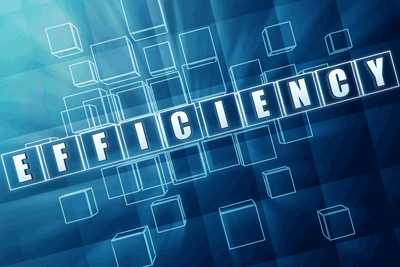Guest blog post by Dr. Paul M. Karpecki, O.D., Koffler Vision Group.
The average optometrist sees about 12-15 patients per day. According to statistics based on future trends and current declining reimbursements as well as the potential changes surrounding the Affordable Care Act (ACA), it is estimated that the average optometrist will have to see more than 25 patients per day in the next five years to have comparable economic results as today. That means an incredible increase in efficiency that should be planned for now.
There are three keys to an efficient practice and achieving these numbers:
- Delegate tasks.
- See the patient no more than one time.
- Have patients leave understanding their condition and prescribed treatments rather than time spent with them.
The optometrist must ONLY do the tasks the she or he can ONLY do. What is meant by this is that any diagnostic test or task that another person, such as a technician, can do equally well with training, should be delegated to them. The more tasks that can be delegated ranging from history taking and pre-testing, to specialty testing, contact lens instruction, optical and even refraction should be considered. The doctor still has to oversee all of these.
For example receiving the numbers from a refraction conducted by a well trained technician or using advanced phoropter technology, is still not the final prescription which the doctor must assess the data, adjust and determine. But up that point all data capture can be delegated.
Doctors should anticipate what the patient will need as far as testing and may include specular microscopy, topography, OCT, osmolarity, adenoplus detector testing and even genetic testing for macular degeneration- all ahead of time. Having the patient leave the lane to have specialized testing is the way things have traditionally been done and it requires the doctor to see one patient two times – in essence decreasing efficiency sometimes by 50 percent. By having all of the testing completed, the doctor can see the patient once and better determine the diagnosis and course of management.
I used to believe that the amount of time spent with a patient contributed to patient satisfaction. I now know that it is not time but rather patient understanding that contributes to patient satisfaction. Without new advances such as TelScreen patient images and Eyemaginations patient education software, it takes a lot more time to get a patient to a level of understanding that results in patient satisfaction.
If a patient can have a better understanding of the condition via Eyemaginations software animations for numerous disease states – in one-third of the time – and patient satisfaction is increased, then you have increased efficiency dramatically. I am convinced that patient education via Eyemaginations achieves this, allowing the doctor more time to see other patients but still feeling confident they spent enough time with each patient because they left with a better understanding and appreciation of the condition they were diagnosed with and treated for.

